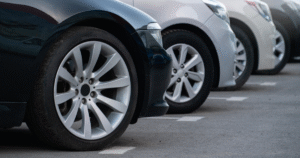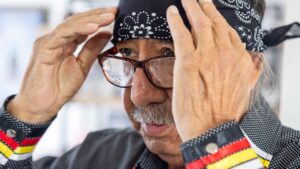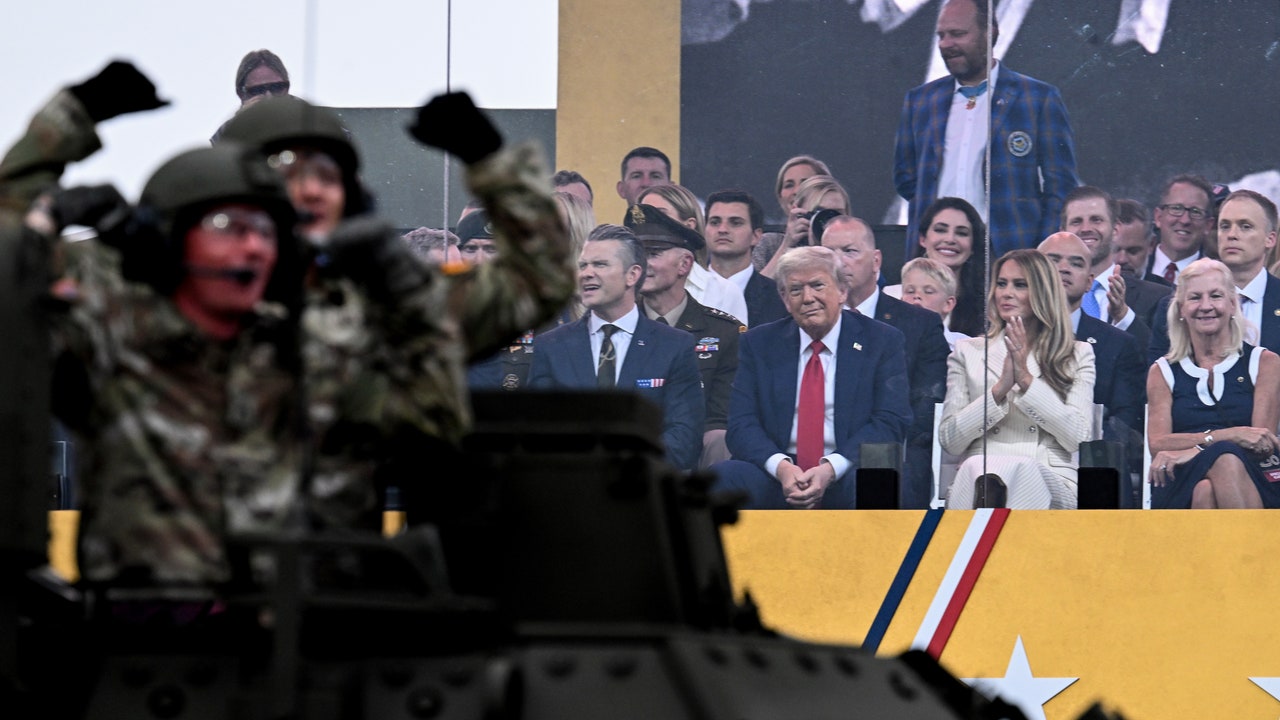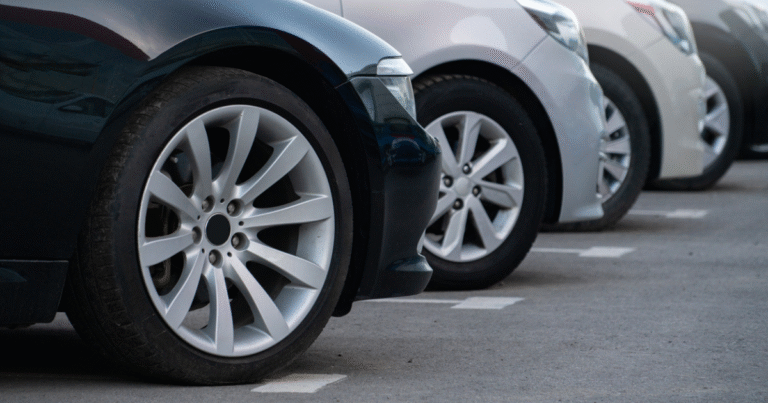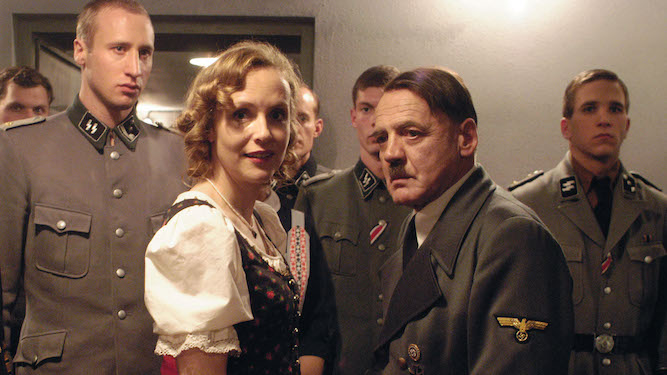A soldier in a Revolutionary War uniform was sitting under a tree, vaping and scrolling on his phone. It was the Army’s two-hundred-and-fiftieth anniversary celebration in D.C., and I was looking for the entrance to their fitness competition and cake-cutting ceremony, before the big parade at night. Walking down Independence Avenue, a little before noon, I heard a din. Behind the Department of Agriculture building, thousands of soldiers were getting in formation. They had spent the night sleeping in the federal agency’s headquarters—workers had been asked to telework to accommodate them—and now they were streaming out into the muggy day for their procession. Each conflict in the Army’s history was to be restaged in a carefully choreographed performance, and so the soldiers were dressed in period costumes: some from the Revolutionary War, others in outfits from the Civil War, the World Wars, Korea, Vietnam, and the Gulf War. The uniforms had been rented and shipped to them from Hollywood.
A year ago, when the Army filed a permit requesting to celebrate its anniversary in D.C., the idea was for about three hundred personnel and four cannons, with a little more than a hundred folding chairs. But the institution happens to share its birthday with President Donald Trump. By now, the whole thing had taken on a different context entirely. The parade would cost forty-five million dollars. Uniformed military had entered the streets a week earlier, in Los Angeles, after Trump deployed National Guard troops and the Marines to the city in response to protests against ICE raids. Trump had said that any protesters against the military parade in D.C., meanwhile, would be met with “very big force.” Around the capital, I had heard people muse about whether Saturday would be something like Tiananmen Square. In other cities, a series of “No Kings” protests were scheduled for the day of the event. Laura Loomer, a MAGA influencer, had cautioned her followers to “stay strapped when you’re in public this weekend.” On the day of the parade, in what appeared to be an act of political violence, in Minnesota, two Democratic lawmakers were shot—one killed, the other injured—by a gunman impersonating a police officer, according to officials.
In D.C., near the shipping entrance for the Bureau of Engraving and Printing, a group of soldiers booed another passing unit. “It keeps everybody hyped up,” one of the men doing the booing told me. “It’s hard to explain to people on the outside that’s how we keep our unity.” He added, “If I walk by, they’d probably boo me, because I’m the boss.” He told me that many of his men were eighteen or nineteen years old. Most had never been to D.C., and they had explored the city together for the past couple of days, doing tourist activities and then bedding down on the floor at U.S.D.A. or the General Services Administration’s regional office building, which is on a list of buildings that Trump plans to get rid of. When I asked him about Trump, he politely made clear that the question was indecorous. “Our job is to fight the nation’s wars,” he said. “Keep the politics out of it. I told my guys, just focus on the mission. This is huge for us history-wise,” he said of the parade. “We’ve been tasked to do this—focus on executing it. Do the mission, then we go home successfully and safely.” He went on, “Next one of these we’ll do will be a three-hundred-year anniversary, fifty years from now, so I’ll probably be long gone, or near-gone.”
Earlier that week, at Fort Bragg, soldiers had booed when Trump called out his political opponents, California’s governor, Gavin Newsom, and Los Angeles’s mayor, Karen Bass: “They’re incompetent, and they paid troublemakers, agitators, and insurrectionists,” the President said. He’d sold his own merchandise at the Army base, and the soldiers appearing in his audience had apparently been handpicked to insure appropriate physical appearance and political leanings. As I stood in the crowd with teen-agers in period garb, in D.C., it was a different universe from the viewing stand down the Mall where, in a few hours, Marjorie Taylor Greene and Pete Hegseth would sit with the President behind bulletproof glass. A group of Green Berets walked by, followed by a band unit, practicing their instruments. When I looked up, I could see a woman in a white dress standing at the window of a luxury high-rise apartment, staring down at the scene.
I made my way back to the Mall, where a jumbotron ad for Army recruitment flashed next to a large flag blowing in the wind that read “January 6th was an Inside Job.” I passed a few protesters holding signs with edited photos of Trump and Putin hugging shirtless—“the original Moscow mules.” The city had the eerie, abandoned feel it gets before big staged events, where a giant security apparatus puts most of its federal buildings behind black fencing. The occasional pedicab driver rode down the empty downtown streets, cordoned off from traffic by D.C. trash trucks. Tanks that had arrived from around the country had been sitting idly on the Mall for a few days; a summer thunderstorm was now threatening to rain out the President’s parade. I had seen an ad on Craigslist offering a “flat fee of $1,000 paid in cryptocurrency” to seat fillers in red hats and gold accessories “for space maximization and attendance.”
At dusk, the sky was heavy with wildfire smoke that had blown down from New Jersey. The Army’s Golden Knights, who were meant to be the parade’s grand finale, parachuted almost as soon as the event began so that they would fall from the sky before the rain. There was no line to enter the security perimeter, which was manned by T.S.A. workers. An elderly woman in front of me was told that she couldn’t bring in her mini American flags unless she removed them from their sticks, which were a potential weapon. Along the parade route, the Revolutionary War units were marching by as I entered. “There’s George Washington, straight from the grave!” someone called out. A parade announcer thanked Lockheed Martin and Coinbase for their sponsorship.
A group of several hundred protesters who had gathered for a “Refuse Fascism” demonstration had marched from Logan Circle to the White House. On the sidelines of the parade, a number of attendees held signs with messages like “monarchs are butterflies not presidents,” standing beside onlookers who clapped at the tanks and who occasionally broke into chants of “U-S-A.” There was no friction between them. The crowd was mostly quiet. A baby in a diaper crawled in the grass outside of the Organization of American States building; T.S.A. workers who’d finished their shifts screening attendees congregated around a statue of Simón Bolívar on a horse—“the Liberator.” A woman in a neon “hands off democracy” traffic vest chatted with a family who had come to town to view the parade. Nearby, a man holding a banner that read “practice nonviolence,” who told me that he works with D.C.’s poor and homeless population, said, “A hundred and twenty of them died without a home in this city, and we spent forty-five million on this? America is addicted to military idolatry.” A soldier passing by on a tank made a heart-shaped sign with his fingers. “We love you! Happy birthday!” a woman in a pink Trump hat cried out. “This was never about Trump,” a man in a tank top said. “It’s crazy that the pundits say that. That they would slander our United States Army.”
A few pardoned January 6th rioters had travelled to the city for the celebrations. One was selling Trump merchandise outside the parade gates. “It’s gravy, baby,” he said, of the mood. “Biden and his handlers did everything they could to shame this nation,” his friend told me. “America needed this.”
Most attendees near me streamed out slowly before the fireworks show started. A friend of mine, who grew up in East Germany, had come down from New York to see the tanks in the capital. She said that the scariest thing she saw was a robot dog, at an Army fair that had taken place earlier in the day. “This was nothing like the military parade that I experienced every year until the fall of the wall, in 1989,” she said. “Those were very loud and grim and brutal affairs. Every year I was a child, I thought World War Three was beginning.” She went on, “We would never have gone if we had the choice. But we did not. You can’t imagine how much energy went into getting people to show up for those parades in East Berlin.” The sparse crowds for Trump’s parade were charming to her—you can offer to pay people on Craigslist, but, in the U.S., you can’t force them to attend. Even most Republican lawmakers had sat out the event.
Down the Mall, by the Ellipse, Trump took the podium and delivered the Oath of Enlistment to a group of soldiers who stood in front of the stage. “Have a great life,” he said. As I exited, I passed a man, positioned in a lawn chair under a red umbrella, who calls himself the Truth Conductor. He sat beneath a sign that read “Stop Hating Each Other Because You Disagree.” Parade-goers hoping to avoid the rain streamed past him as he asked for donations. “If I put ‘Let’s Go Brandon’ on this sign—which means Fuck Joe Biden—I’d get rich overnight,” he said into a microphone. “When you do the right thing to bring people together, people just walk right past you. Not even home is safe, as we saw this morning.” A man passing by, in an American Legion hat, told him to go home. The Conductor responded, “Take your old ass home. This is my home. I don’t even know where you’re from.” “Shut up,” the other guy yelled back. The Conductor started playing “Y.M.C.A.” from a boom box. ♦

